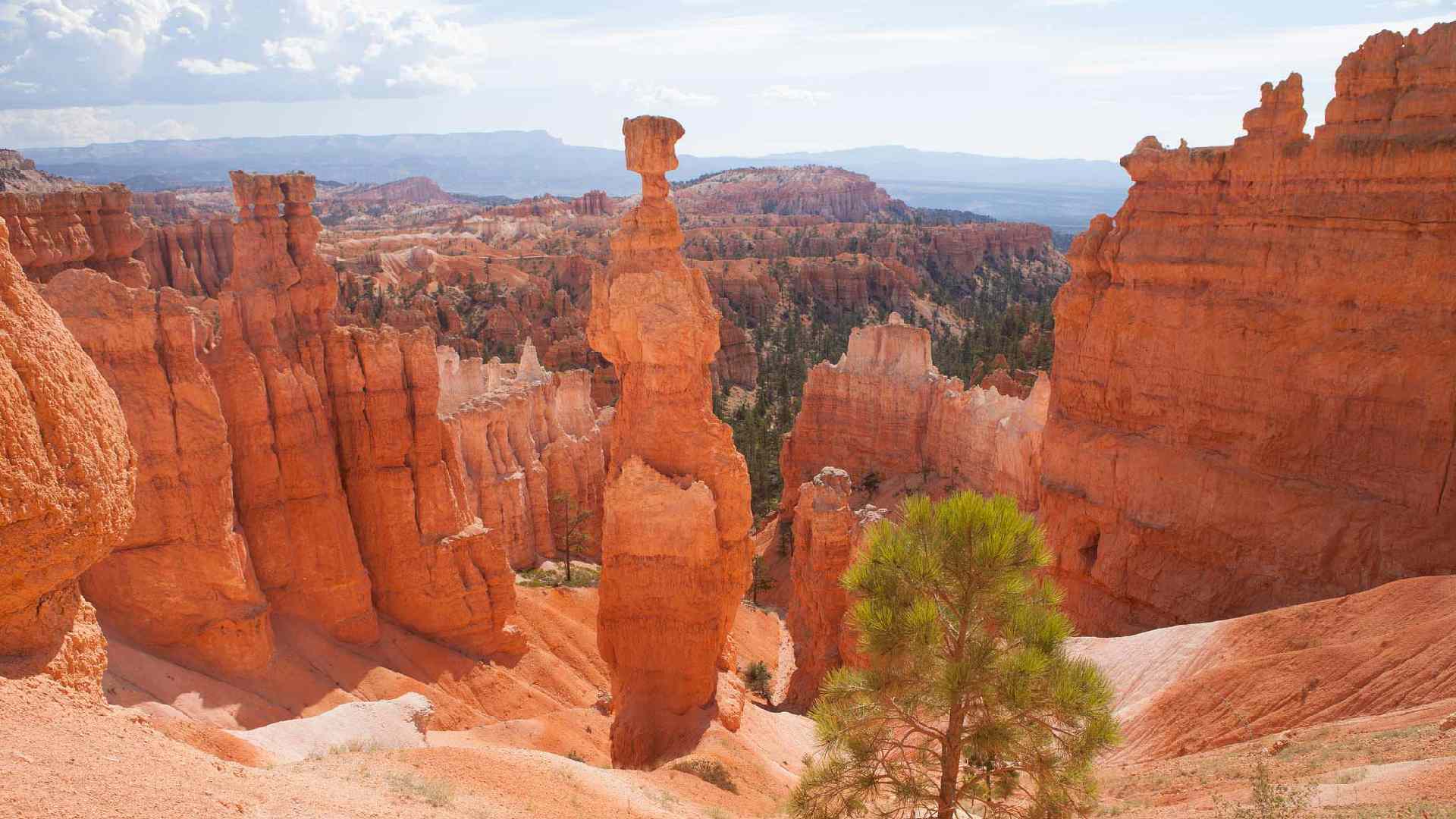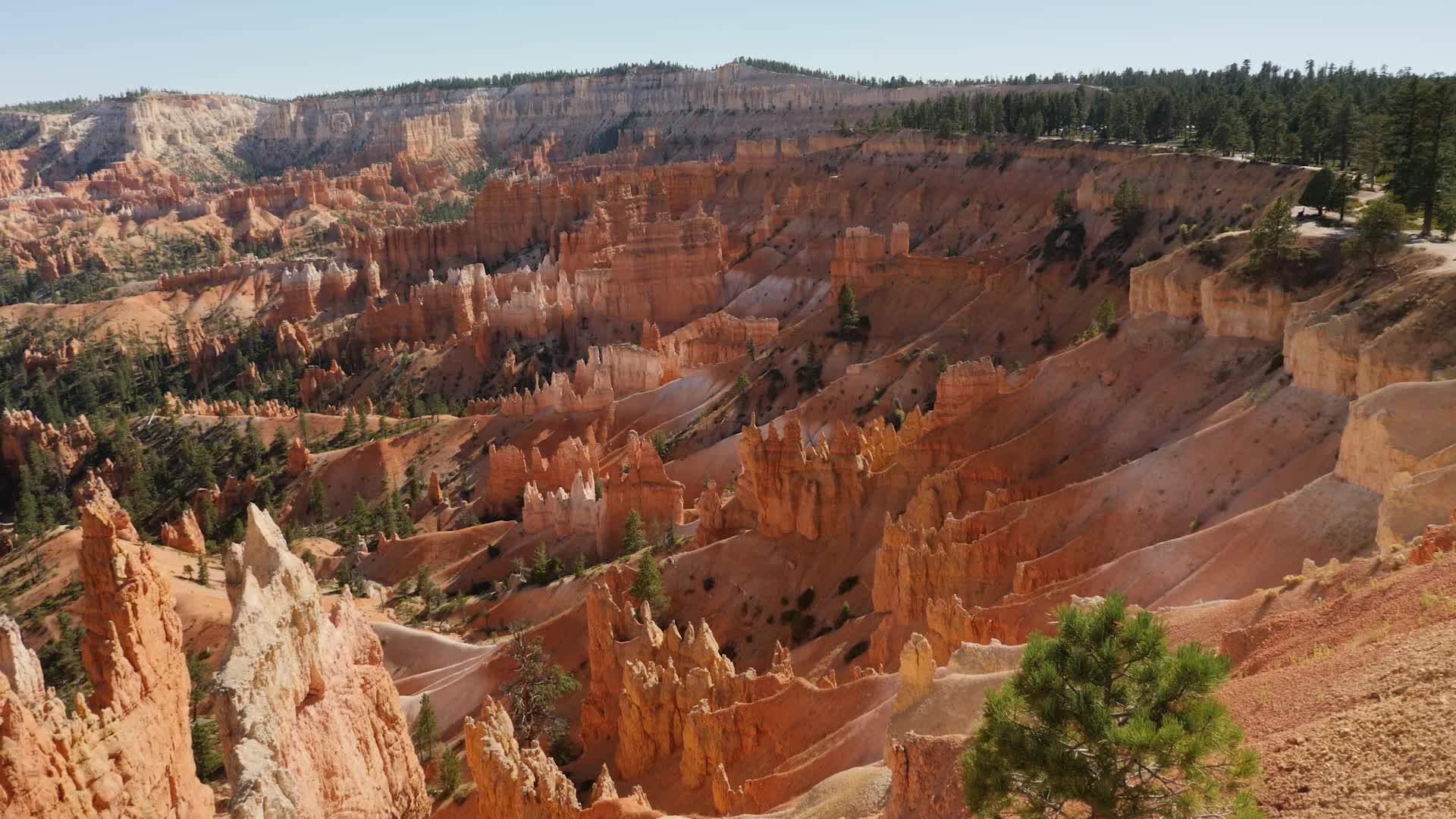
Bryce Canyon National Park, Utah:
Bryce Canyon National Park, located in southwestern Utah, is known for its unique geological formations called hoodoos, which are tall, thin spires of rock that create a surreal and breathtaking landscape. Here’s a detailed description of the place:
Visitor Fee: There is an entrance fee to visit Bryce Canyon National Park. As of the knowledge cutoff in September 2021, the entrance fee for a private vehicle is $35 for a seven-day pass. Motorcycles are charged $30, and pedestrians or cyclists entering the park on foot or by bicycle pay $20 per person for a seven-day pass. The fees may vary, so it’s recommended to check the official National Park Service website for the most up-to-date information.
Transportation: Visitors can reach Bryce Canyon National Park using various means of transportation:
- Car: The park is easily accessible by car via State Route 63, which connects to U.S. Route 89. Parking is available near the visitor center and various viewpoints within the park.
- Shuttle Service: From late May to early October, a shuttle service operates within the park, providing transportation to various viewpoints and trailheads. The shuttle service is free and reduces congestion on the park’s narrow roads.
- Public Transportation: There is no direct public transportation to Bryce Canyon National Park. The closest major airport is in Salt Lake City, Utah, and from there, visitors can rent a car or use tour operators that offer transportation to the park.
Things to Do:
- Scenic Drive: Take a scenic drive along the Bryce Canyon National Park’s main road, known as Bryce Canyon Scenic Drive (Highway 63). This road provides access to numerous viewpoints and overlooks, allowing you to admire the stunning landscapes and hoodoos.
- Hiking: Explore the park’s extensive network of hiking trails, which offer various levels of difficulty and distances. Popular hikes include the Rim Trail, Navajo Loop Trail, Queens Garden Trail, and Fairyland Loop Trail. These hikes provide opportunities to get up close to the unique rock formations and stunning vistas.
- Scenic Overlooks: Visit the park’s numerous scenic viewpoints, such as Sunrise Point, Sunset Point, and Inspiration Point. These viewpoints offer panoramic views of the Bryce Amphitheater, where you can see the iconic hoodoos stretching across the landscape.
- Ranger Programs: Attend ranger-led programs and guided walks to learn about the park’s geology, flora, fauna, and cultural history. Rangers provide informative talks, interpretive programs, and evening campfire programs during the summer months.
- Horseback Riding: Explore the park on horseback by joining guided horseback riding tours, which offer a unique perspective and allow you to cover more ground while enjoying the scenery.
List of Activities:
- Photography: Capture the striking and vibrant landscapes of Bryce Canyon National Park. The changing light throughout the day creates unique photo opportunities, especially during sunrise and sunset when the hoodoos are bathed in warm colors.
- Stargazing: Experience the park’s dark night skies, which are renowned for their clarity and lack of light pollution. Attend ranger-led stargazing programs or simply find a quiet spot to marvel at the stars and the Milky Way.
- Snowshoeing and Cross-Country Skiing: During winter months, when snow blankets the park, visitors can enjoy snowshoeing or cross-country skiing on designated trails. It offers a different perspective on the park’s unique beauty.
- Astronomy Programs: Bryce Canyon National Park is designated as an International Dark Sky Park, making it an ideal location for stargazing and astronomy programs. Attend one of the ranger-led astronomy programs to learn about the night sky and view celestial objects through telescopes.

Why People Enjoy Coming Here: People enjoy visiting Bryce Canyon National Park for several reasons:
- Unique Geology: Bryce Canyon is famous for its stunning and otherworldly hoodoos, which are natural rock formations that are unlike anything found in other national parks. The intricate shapes, vibrant colors, and surreal landscapes create a mesmerizing and photogenic environment.
- Scenic Beauty: The park’s striking vistas, expansive amphitheaters, and panoramic viewpoints offer breathtaking views and incredible photo opportunities. Visitors are captivated by the contrasting colors, dramatic cliffs, and the ever-changing light that dances on the hoodoos.
- Hiking and Outdoor Activities: Bryce Canyon provides a range of hiking trails suitable for different fitness levels, allowing visitors to immerse themselves in nature and experience the unique terrain up close. The park also offers opportunities for horseback riding, snowshoeing, and cross-country skiing.
- Dark Sky Experience: Bryce Canyon’s designation as an International Dark Sky Park makes it a prime destination for stargazing and astronomy enthusiasts. The park’s remote location and limited light pollution provide excellent conditions for observing the night sky and celestial phenomena.
- Serene Environment: Bryce Canyon National Park offers a peaceful and serene environment, away from the hustle and bustle of city life. Visitors come to enjoy the tranquility, reconnect with nature, and find solace in the natural surroundings.
Age of the Place:
The geological formations in Bryce Canyon National Park began to take shape around 40-60 million years ago. However, the park itself was established as a national monument in 1923 and later designated as a national park in 1928. Therefore, as of the knowledge cutoff in September 2021, Bryce Canyon National Park is over 90 years old.
Additional Nearby Attractions:
- Grand Staircase-Escalante National Monument: Located to the northeast of Bryce Canyon National Park, the Grand Staircase-Escalante National Monument offers stunning canyons, slot canyons, and scenic drives. It is known for its remote and rugged landscapes.
- Zion National Park: Situated to the southwest of Bryce Canyon, Zion National Park is another iconic national park in Utah. It offers majestic red rock cliffs, deep canyons, and a variety of hiking trails suitable for different skill levels.
- Capitol Reef National Park: Located to the east of Bryce Canyon, Capitol Reef National Park features stunning sandstone formations, colorful cliffs, and the Waterpocket Fold, a geologic monocline. The park offers hiking, scenic drives, and camping opportunities.
- Kodachrome Basin State Park: Situated southeast of Bryce Canyon, Kodachrome Basin State Park is known for its unique sandstone spires, colorful rock formations, and scenic trails. It offers opportunities for hiking, camping, and photography.